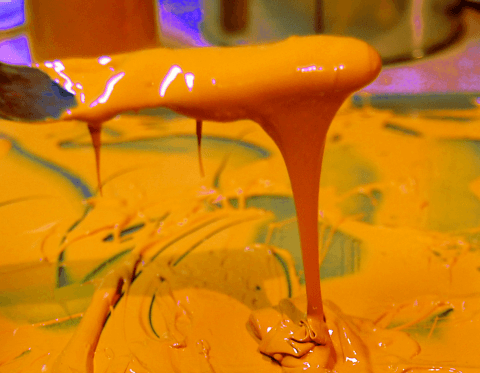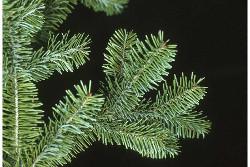THE LONG AND SHORT OF ARTIST GRADE PAINTS
For
thousands of years, people have made pigments from materials found in
the earth: minerals, metals, biological and organic substances. These
pigments often have very different qualities, depending on the size and
shape of the particles. When ground in oil, pigments behave in what has
come to be known as either a “Long” or “Short” fashion. Long paints
have a more “ropey” quality, and tend to level out, not showing brush
strokes. In contrast, short buttery paints can stand in peaks, and more
readily show brush strokes.
The term “ropey” refers to the resistant pull on the brush from a long
paint. Long paints often will result in an enamel-like finish, and
short paints – sometimes because of additional additives – will have
less gloss, can stand in buttery peaks, and more readily show brush
strokes. Artist grade paints generally have a very high content of
pigment, and so the variation in viscosity from pigment to pigment is
noticable. In contrast, student grade paints tend to be more uniform
from one tube to another, with the filler material content being high.
With artist grade paints, the assumption is that an artist already has a
medium that works well with the artist’s style, and the primary purpose
of the paint is to supply the color of the pigment. The artist makes
the decision about paint quality and handling characteristics.
For the past 50 years or so, “short” buttery paints have been preferred by many artists, although “long” paints appear to be coming back in fashion in some circles. To make a uniform line of buttery paints that sells, manufacturers have incorporated substantial bases of fillers and stabilizers into their paints. With this type of paint, all colors behave generally the same. However, two things ultimately determine whether a paint is long or short: the pigment and the medium. The paint can be made long by adding a thickened oil or resin medium, or can be made short by adding an impasto medium. An artist grade paint leaves the decision to the artist, who creates the characteristics of the final paint by working with both the paint and the medium, adding medium in various quantities to the diverse pigment-paints as needed to create the ideal effect.
It is important to note that virtually all brands of artist paint are made with small amounts of additives to prevent oil-pigment separation. Otherwise the paints would be totally unusable. If you have ever opened a tube of paint and found that only oil comes out, followed by overly thick pigment, you are familiar with the problem. In the end, the benefit of using an artist grade paint is that you have greater flexibility in finding the paint that best fits your style and purpose.




